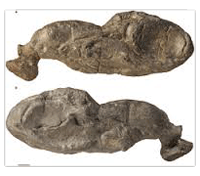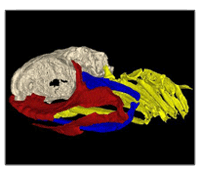
We have been writing a series of posts over at the OpenSesame blog about how to design visuals within training materials to help your learners learn more effectively. The series has included posts on the following graphic techniques:
- Organizing on-screen visual elements to ease perception
- Using visual elements to direct the viewer’s eyes
- Reducing the processing load by reducing realism
- Using visual displays to make abstract concepts more concrete
- Using visuals to clarify complex information
- Using visuals to add a spark, charge, or otherwise attract attention
As you’d imagine, this has caused us to pay even more attention to the visuals we see in all walks of life. For example, a news story at NPR about sharks (a favorite topic) caught our eye this way (pun intended!). The article included an example of a “specialized view” used to clarify complexity. This is one of the techniques we had highlighted in our series, and it’s something that our training materials, which include lots of 3D animation, make great use of.
The article was about an ancient shark fossil. Even though scientists had long believed that sharks evolved very little since the time of their ancient ancestors, the fossil told a different story. In fact, it turns out that the gills of modern sharks are (a) different than the gills of ancient sharks and (b) a more recent evolutionary development than the gills on modern fish (traditionally, scientists thought the order was reversed, with fish gills being a more recent adaptation than shark gills).


The “visual” angle of this story comes in because you can’t see the unique aspects of ancient, fossilized shark gills with the naked eye. According to the article, the shark fossil looks like an ordinary brown rock (as you can see from the first photo on the right).
But take a CT scan and make a 3D image (the second image on the right), and an entirely different view emerges, leading to a change in shark evolutionary theory. According to John Maisey, a paleontologist at the American Museum of Natural History who helped identify the fossil, “it’s not like the anatomy of a modern shark at all” and “they have evolved through time to improve upon the basic model.”
All that through a visualization. And of course, it’s the visual that made the article come alive and make sense to me, too, including the colors added to the fossil to show the brain case, the jaw, and the gill arches (which are colored yellow).
Score another victory for the use of visuals to convey information! Although this article was about the evolution of sharks, the same visual principals can be applied to your training materials (as we explained in the series we mentioned at the top).
A final quick note, giving credit where credit is due: this article and the news story from NPR were both based on research and images in “A Palaeozoic shark with osteichthyan-like branchial arches,” an article in the May, 2014 edition of Nature. Hats off to these researchers for the good and interesting work.